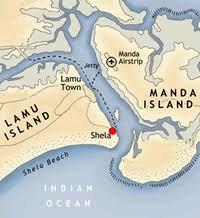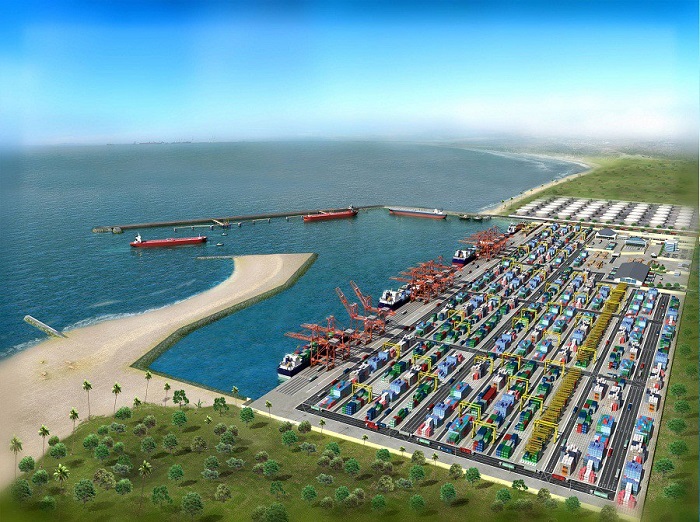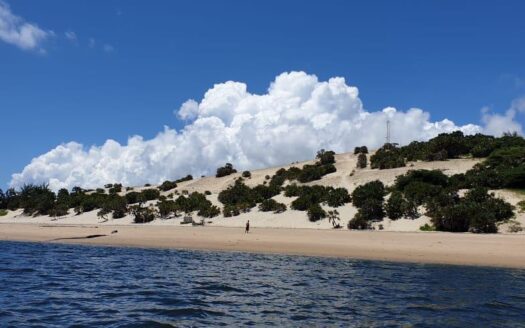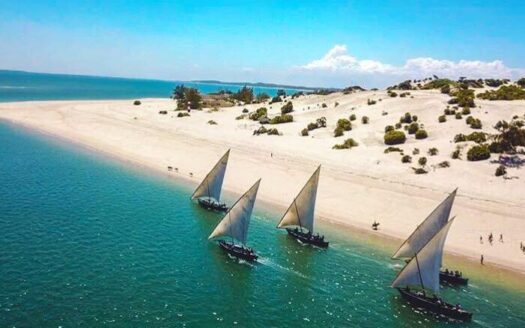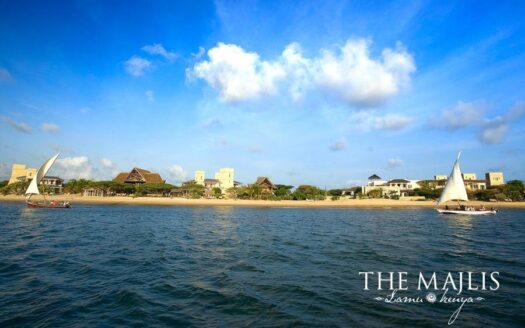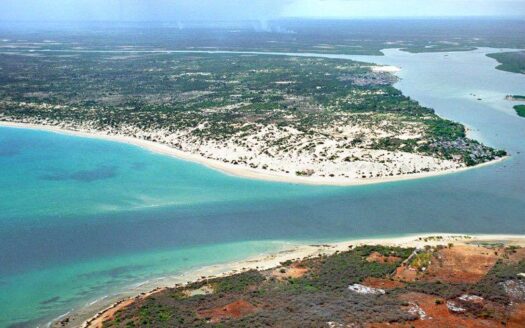Overview
- Updated On:
- December 4, 2018
Description
A perfect buy-and-hold opportunity in readiness for the new Lamu Port. Limited number of prime plots and villas on Lamu Island for sale starting at KSH 2.5M… Starting 3rd row from the only beach in Lamu, in a perfect location & pricing…
Here is a rare, prime investment opportunity that has recently been made available…
There are only 114 plots available. They are between Lamu Town and Shela. Here is the deed plan:
Pricing & Availability
1/4 acre (1000m2) @ KSH 4m each (only 30 pieces available)
1/8 acre (500m2) @ KSH 2.5m each (only 84 pieces available)
The plot has electricity already and the island has fresh water.
To best understand why this particular property is well positioned and well priced, you need to first consider what Lamu is all about…
Lamu is famous worldwide, but it is largely uninhabited. Lamu has only two well populated areas that you should be concerned about: Lamu Town and Shela. Lamu Town is the district headquarters and the commercial zone, although it is heavily visited by tourists from all over the world. Shela, roughly 3.4 KM away, is the upmarket, mostly residential area. This is where all the celebrities homes are (see below). The airport is on the neighboring island of Manda, a 5 minute boat ride away. The rest of Lamu is largely uninhabited. Manda, lacking fresh water or electricity, is also largely uninhabited.
The New Port Will Boost The Economy Of This Region… But How Does That Impact You?
Lamu is poised to grow! The governments of Kenya, Ethiopia and Sudan are pouring in $16 billion (Shs1.4 trillion) into the new Lamu port project. Additionally, companies from China, Japan, Singapore, USA and beyond, construction companies and global shipping and oil companies, are now eyeing this small town.
There will be the need for businesses, accommodation for travelers and workers, there will be ships crews and business people arriving, and more… Right now, the current accommodation capacity is so small that it traditionally gets fully booked in the December holidays. What about when business kicks in with the new port? This phenomenon, combined with the plots we have for you, has set up a perfect buy and hold opportunity.
The banks, as usually, know it. A few years ago, there was only one bank in Lamu. KCB. Now you will find KCB, ABC, Gulf, plus DTB is currently finishing work on it’s new Lamu branch. Undoubtedly, you have seen President Kibaki emphasize how important this project is to the country, how top a priority it is.
But this is the thing to keep in mind: the new port, when completed, will be mostly a commercial zone. It is being built at a place with no current settlement! Sure, some of the workers will be housed at the port area, but it currently has nothing there to attract anyone else other than the workers. So the workers families, business people, travelers, holiday-makers, officials, executives… will all stay on Lamu Island, where there is a society living and breathing, the same island where global celebrities stay, the same place UNESCO declared a World Heritage Center, the only place with a beach, entertainment, shops, and normal human life. This is why it makes sense to invest in a suitable location on the island, close to Lamu Town and Shela.
A Brief History Of Lamu
Lamu Town on Lamu Island is Kenya’s oldest continually inhabited town, and was one of the original Swahili settlements along coastal East Africa. There are some other accounts that mention Chinese ships of Zheng He’s fleet sinking near Lamu Island in Kenya in 1415. Survivors settled on the island and married local women. The town was first attested in writing by an Arab traveller Abu-al-Mahasini who met a Judge from Lamu visiting Mecca in 1441.
The town’s history was marked by a Portuguese invasion in 1506, and then Omani domination from around 1813 (the year of the Battle of Shela). In the 1580s, prompted by Turkish raids, Lamu led a rebellion against the Portuguese. In 1652, Oman assisted Lamu to resist Portuguese control. Lamu’s years as an Omani protectorate mark the town’s golden age. During this period, Lamu became a center of poetry, politics, arts and crafts as well as the trade.
Lamu’s economy was based on slave trade until abolition in the year 1907. In addition to the abolition of slavery, construction of the Uganda Railroad in 1901 (which started from the competing port of Mombassa) significantly hampered Lamu’s economy. Tourism has gradually refueled the local economy in recent times.
The old city is inscribed on the World Heritage List as “the oldest and best-preserved Swahili settlement in East Africa”.
While Al Shabaab kidnappings placed Lamu off-limits since September 2011, the island is now considered safe. On April 4, 2012, The US Department of State lifted its Lamu travel restriction.
And Why Is Lamu Very Important To China?
China has completed feasibility studies to transform Lamu into the largest port in East Africa, as part of their String of Pearls strategy. Why? The String of Pearls refers to the Chinese sea lines of communication which extend from the Chinese mainland to Port Sudan. The term was used in an internal United States Department of Defense report titled “Energy Futures in Asia”. Lamu matters a great deal to China, especially because of China’s ever-increasing need for Oil.
But it affects not only China. This new project is of great interest to a great many people. Here is a larger picture of the African part of that plan:
What The World Thinks Of Lamu
“There is no doubt that – even for the first time visitor – Lamu has that ‘must have a house here’ factor.” – House & Garden
“With its rich and raffish history as an Arab trading post, its idyllic beaches, and its downright bizarre mix of characters, the island may be Africa’s ultimate exotic hideout.” – W Magazine
“Kenya’s secret paradise island – Lamu is a magical, ancient Swahili town – a mini-Zanzibar dating back to the Thirteenth Century” – Sunday Times
“Lamu is a tiny island filled with hot, hot days, perfect sea breeze and empty white beaches. It has crumbling Arabic houses, narrow twisting streets, hectic marketplaces, stunning sunsets… in short, it is wonderful.” – The Times
“An African idyll where time has stood still – with its warm welcome, gorgeous beaches and vibrant Swahili culture, the Kenyan isle of Lamu is the perfect winter getaway.” – The Observer
“he island’s venerable old town blends Arab and African culture with a sun-baked, siesta-time feel that gives it a wonderfully sedate charm.” – Daily Telegraph
“Marrakech-on-the-beach.” – New York Times
“Talcum-soft sand, maze-like alleyways filled with the scent of spices, ancient dhows bobbing on the Indian Ocean…” – The Guardian
“The eight-mile crescent of Lamu Beach runs south from the Swahili village of Shela. The dawn walk along the water’s edge to breakfast at Kizingo Lodge is a rare chance to explore a virgin Indian Ocean beachscape. Translucent pink crabs scuttle into the sea, sand dollars litter the beach like confetti and birdsong drifts from the dunes beyond.”– Daily Telegraph
“A beguiling archipelago whose inhabitants live closer to the age of Sinbad than to the 21st century… Theirs is a luminous world – half sea, half sky, divided by low horizons of dunes, mangrove creeks, deserted beaches and coral reefs… Its waters are the haunt of turtles, pelicans, dugongs and whale sharks.” – Daily Telegraph
“Outstanding universal value…” – UNESCO
By the way… Princess Caroline of Hanover, Sienna Miller, Sting, Ewan McGregor and many other celebrities own or rent houses in Shela (Source: The Telegraph, UK).
In fact, Lamu receives international celebrities just about every year, you just never hear about it.
Construction of Lamu Project Underway
According to Allafrica.com, “the six components of the project include a sea port straddling some 750 acres of land with 10 container terminal berths and three bulk cargo terminal berths, an oil jetty and an international airport with a 2,000 person-per-day capacity on 10 daily flights. Other components are a three-limbed 1.4m gauge railway line for high speed trains: the limbs are Lamu-Isiolo-South Sudan (1,400km); Nairobi-Isiolo-Moyale-Addis Ababa (1,596km) and Lamu-Mombasa (350km). The pipeline too had three phases: South Sudan border-Lamu-Isiolo (1500km); Nairobi-Isiolo-Moyale-Addis Ababa (1400km) and a branch to link Lamu to the existing Mombasa/Kampala pipeline. The project also includes three stretches of highway: Lamu-Isiolo-South Sudan border (1400km); Nairobi-Addis Ababa (1596km) and Lamu-Mombasa (320km).


